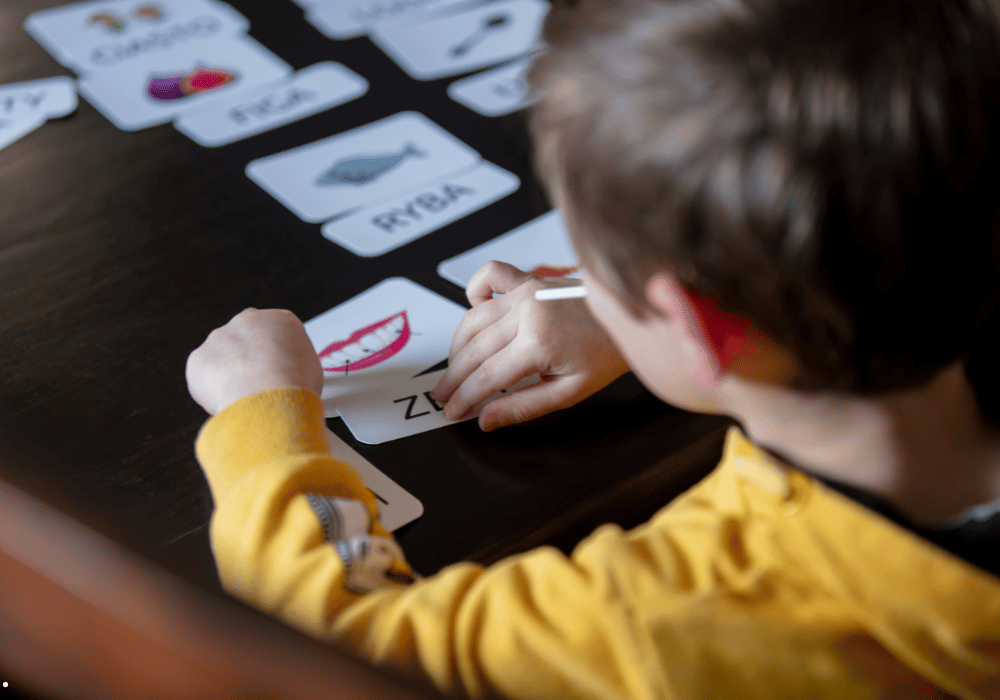In recent years, Applied Behavior Analysis (ABA) therapy has gained significant attention for its effectiveness in helping children with autism spectrum disorders and other developmental challenges. However, when it comes to implementing ABA techniques at home, many parents and caregivers feel overwhelmed by the complexities involved. But fear not! This guide is here to provide you with a comprehensive overview of actionable strategies that can make ABA therapy manageable and successful in the comfort of your home. Whether you’re new to ABA or looking to enhance your current approach, you’ll find valuable insights to support your child’s development.
Understanding ABA Therapy
Applied Behavior Analysis (ABA) is a therapeutic approach that focuses on understanding and modifying behavior. It is rooted in the principles of behaviorism, which emphasizes the importance of observable behavior and the environment’s role in shaping it. ABA therapy uses positive reinforcement and structured interventions to encourage desired behaviors while reducing those that are less desirable. The ultimate goal is to improve social, communication, and learning skills in children with developmental delays.
ABA is often used as a structured therapy in clinical settings, but its principles can be effectively applied at home too. By integrating these techniques into daily routines, parents and caregivers can provide consistent support to their child, reinforcing the learning and development achieved during formal therapy sessions. With the right guidance and understanding, ABA therapy at home can become an empowering tool for families.
For parents considering ABA therapy at home, it’s essential to first grasp the basics. This means understanding the key components of ABA, including the importance of data collection, the use of reinforcers, and the gradual introduction of new skills. By familiarizing yourself with these elements, you’ll be better equipped to create a supportive and structured environment that encourages positive behavior change.
The Importance of Consistency
Consistency is a crucial aspect of effective ABA therapy, whether facilitated by professionals or implemented at home. When it comes to behavior modification, regularity plays a vital role in helping children understand expectations and build new skills. Consistent application of ABA techniques ensures that children receive clear and predictable feedback, which enhances their learning experience.
One way to maintain consistency is by establishing set routines for therapy sessions. Allocating specific times for focused activities allows your child to anticipate and prepare for these learning moments. Additionally, maintaining consistency in how you respond to behaviors, whether through praise or redirection, reinforces the intended outcomes and helps solidify positive changes.
It’s important to remember that consistency doesn’t mean rigidity. Flexibility within a consistent framework is key to addressing the unique needs and preferences of your child. Adapting to your child’s pace and progress while maintaining a stable routine fosters a supportive environment that encourages growth and development.
Creating a Structured Environment
A structured environment is foundational for successful ABA therapy at home. Children thrive in settings where they know what to expect, which provides them with a sense of security and reduces anxiety. This environment should be designed to facilitate learning, maximize engagement, and prevent distractions.
Start by designating a specific area in your home for therapy activities. This space should be free from unnecessary clutter and potential interruptions. Having a dedicated spot for ABA sessions helps signal to your child that it’s time to focus and learn. Additionally, using visual cues such as schedules or charts can further clarify expectations and guide your child’s behavior.
Incorporate tools and materials that support learning in this environment. These could include flashcards, interactive games, sensory items, and educational toys. The key is to choose resources that align with your child’s interests and developmental goals. By creating a structured space tailored to your child’s needs, you’re setting the stage for meaningful learning experiences.
Setting Realistic Goals
Setting realistic goals is an integral part of effective ABA therapy at home. Goals serve as a roadmap for your child’s progress and provide direction for your interventions. It’s important to establish goals that are achievable and aligned with your child’s developmental stage, strengths, and areas of improvement.
Begin by identifying specific behaviors or skills you want to target. These could encompass communication, social interaction, self-care, or academic abilities. Once you’ve identified these areas, break down the goals into smaller, manageable steps. This approach allows your child to experience success along the way, boosting their motivation and confidence.
Regularly assess and adjust your goals based on your child’s progress. Celebrate achievements, no matter how small, and be patient with challenges. Remember that each child is unique, and their developmental trajectory may differ from others. By setting realistic and personalized goals, you’re fostering an environment that promotes growth while honoring your child’s individuality.
Utilizing Positive Reinforcement
Positive reinforcement is a core principle of ABA therapy and plays a pivotal role in motivating behavior change. It involves rewarding desired behaviors to increase the likelihood of their recurrence. When implemented effectively, positive reinforcement encourages your child to engage in appropriate actions and reduces the occurrence of challenging behaviors.
To begin using positive reinforcement, identify reinforcers that are meaningful and motivating for your child. These could range from verbal praise and tokens to preferred activities or small treats. The key is to ensure that the reinforcers are contingent upon the desired behavior, meaning they are only provided when the behavior is exhibited.
Consistency is vital when applying positive reinforcement. Deliver rewards immediately after the desired behavior occurs to strengthen the connection between action and consequence. Over time, you can gradually fade the frequency of reinforcement while maintaining the behavior, ensuring that your child continues to engage in positive actions even without immediate rewards.
Incorporating Naturalistic Teaching
Naturalistic teaching involves integrating ABA principles into everyday activities and interactions. This approach capitalizes on real-life situations to promote skill development and generalization. By embedding learning opportunities within daily routines, children are more likely to retain and apply new skills across various contexts.
One way to incorporate naturalistic teaching is through play-based learning. Engage your child in activities they enjoy, such as building blocks or pretend play, and use these moments to introduce concepts like turn-taking, sharing, or problem-solving. By creating enjoyable and meaningful learning experiences, you’re enhancing your child’s engagement and motivation.
Additionally, look for teachable moments throughout the day. Whether it’s during mealtime, bath time, or trips to the grocery store, these situations provide valuable opportunities to reinforce communication, social interaction, and self-help skills. By seamlessly integrating ABA techniques into your daily routine, you’re fostering a holistic approach to learning.
Understanding Data Collection
Data collection is a fundamental component of ABA therapy, offering insights into your child’s progress and the effectiveness of interventions. By systematically recording and analyzing data, you can make informed decisions about which strategies are working and where adjustments are needed.
Begin by identifying the behaviors or skills you want to track. This could include communication attempts, instances of sharing, or following directions. Choose a method of data collection that suits your preferences and the behaviors being measured, such as tally charts, checklists, or digital apps.
Regularly review and analyze the data to identify patterns and trends. This process allows you to evaluate the impact of your interventions and make data-driven decisions about next steps. Remember that data collection is a dynamic process that evolves as your child’s needs change. By staying engaged with the data, you’re ensuring that your efforts are targeted and effective.
Building a Supportive Network
Implementing ABA therapy at home is a collaborative effort that benefits from a strong support network. Connecting with professionals, educators, and fellow parents can provide valuable guidance, resources, and emotional support as you navigate your child’s developmental journey.
Consider seeking guidance from a certified ABA therapist who can help you develop and refine your home-based interventions. These professionals have the expertise to tailor strategies to your child’s unique needs and provide insights into best practices. Regular check-ins and consultations can help you stay on track and make informed decisions.
Additionally, engage with parent support groups or online communities of families facing similar challenges. Sharing experiences, exchanging ideas, and receiving encouragement can be empowering and reassuring. Building a supportive network ensures that you’re not alone on this journey and that you have access to a wealth of knowledge and resources.
Encouraging Social Interaction
Social interaction is a vital skill that can be nurtured through effective ABA techniques. By providing opportunities for your child to engage with peers and adults, you’re promoting communication, cooperation, and social competence. Encouraging social interaction can be seamlessly integrated into your daily routine.
Organize playdates or group activities with other children to facilitate social engagement. These interactions provide valuable opportunities for your child to practice sharing, taking turns, and initiating conversations. Structured group activities, such as arts and crafts or games, create a supportive environment for building social skills.
Incorporate role-playing scenarios into your daily routine to practice appropriate social responses. For example, rehearse greetings, introductions, and polite requests through fun and interactive activities. By providing consistent and positive experiences, you’re helping your child develop the skills needed to thrive in social settings.
Balancing Structure and Flexibility
Balancing structure and flexibility is key to creating a successful ABA therapy environment at home. While consistency and routine are important, allowing room for flexibility ensures that your child’s unique preferences and needs are accommodated.
Maintain a structured schedule for therapy sessions and daily routines, providing predictability and stability. Consistent routines help your child understand expectations and promote a sense of security. However, it’s essential to be flexible within this framework to accommodate changes and adapt to your child’s evolving interests.
Monitor your child’s progress and adjust activities based on their responses. If a particular approach isn’t yielding the desired results, be open to trying new strategies or techniques. Flexibility allows you to tailor interventions to your child’s individual strengths and challenges, promoting a more positive and effective learning experience.
ABA therapy at home is a valuable opportunity for parents and caregivers to actively support their child’s development. By implementing the techniques outlined in this guide, you can create a structured and nurturing environment that fosters learning and growth. Remember, consistency, positive reinforcement, and collaboration are key components of successful ABA therapy.
As you continue on this journey, keep in mind that each child is unique, and progress may vary. Celebrate every achievement, no matter how small, and remain patient and resilient in the face of challenges. With dedication and a commitment to your child’s well-being, ABA therapy at home can have a profound impact on their development.
For those seeking additional guidance and resources, consider reaching out to professionals, joining support networks, and exploring further educational materials. By staying informed and engaged, you’re equipping yourself with the tools to provide the best possible support for your child.

